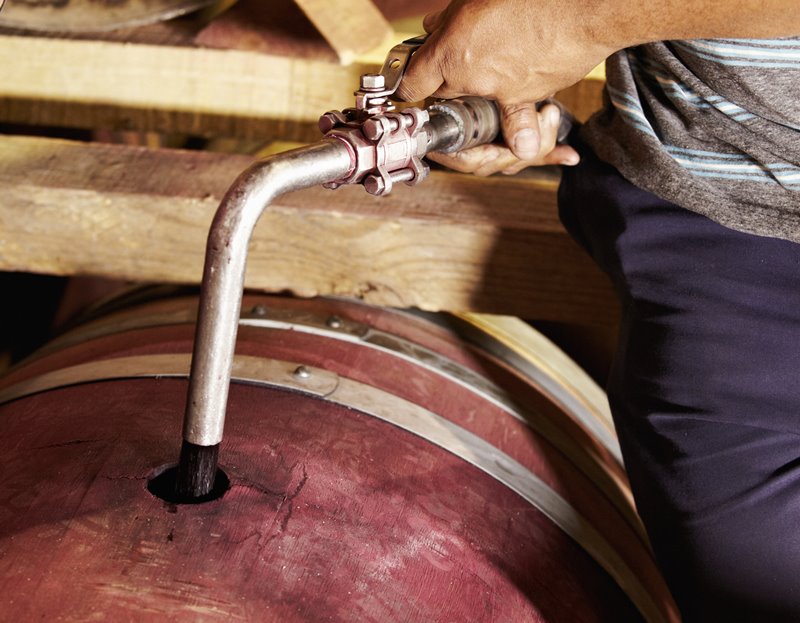
In the enchanting realm of winemaking, the act of racking stands out as a pivotal stage in crafting a wine's unique character and ensuring its quality. This seemingly straightforward process involves transferring wine from one vessel to another to effectively separate the liquid from the lees or sediment. Despite its operational simplicity, racking plays a crucial role in determining the final wine's quality and characteristics.
At first glance, racking might appear to be a minor step in the intricate ballet of winemaking. Yet, it demands skill and precision, emerging as a critical component in sculpting the wine's quality and essence.
Decantation: A Crucial Step for Wine Purity
The process of decantation, a key aspect of racking, focuses on the swift separation of sediment from the wine. This sediment, comprising yeast, bacteria, and other organic substances, settles at the bottom of the container. If not promptly removed, these residues could compromise the wine's aromas and flavors or lead to issues like refermentation if residual sugars are present.
Differentiating Processes: Fine Lees and Cleaning
It's important to distinguish between cleaning racking and the removal of fine lees, which can be beneficial for aging certain wines. Racking the wine soon after fermentation allows only the highest-quality yeasts to remain in contact with the wine, contributing antioxidant and aromatic properties.
The Role of CO2 and Oxygenation
Each racking results in the loss of some dissolved carbon dioxide (CO2), a byproduct of fermentation. While the presence of CO2 might be desirable in white and rosé wines, it could negatively affect the palate of red wines. The methods of racking and the temperature are crucial in managing the retention or release of CO2. Moreover, racking entails a degree of oxygenation, which can be beneficial or detrimental, depending on the type of wine.
Ensuring Homogeneity and Adjusting Sulfites
Racking is also essential for maintaining homogeneity across wine batches. Without it, elements like sulfites, CO2, yeast, and bacteria might act unevenly within the liquid, creating variations within the same vat. Furthermore, racking is used to adjust the level of sulfites in the wine, protecting it against oxidation and unwanted microbial growth.
Frequency and Techniques in Whites and Reds
In white wines, racking generally occurs two to three times throughout the entire production process. However, in red wines, racking is critical for managing CO2 loss and oxygenation. Red wines aged in barrels may require up to five or six rackings. In the classic Bordeaux method, used for many aged wines, racking takes place every three to four months. This involves removing the wine from the barrel, cleaning and sterilizing the barrels, and then refilling them to continue aging.
Blending Batches During Racking
Lastly, racking offers an opportunity for partial or total blending of batches, allowing the winemaker to adjust and refine the wine's profile.
Through the lens of racking, we delve into the nuanced art of winemaking, where every detail contributes to the creation of exquisite wines. This crucial process not only ensures the wine's clarity and stability but also plays a significant role in defining its ultimate flavor profile and aromatic bouquet.
Founded in 2007, Vinetur® is a registered trademark of VGSC S.L. with a long history in the wine industry.
VGSC, S.L. with VAT number B70255591 is a spanish company legally registered in the Commercial Register of the city of Santiago de Compostela, with registration number: Bulletin 181, Reference 356049 in Volume 13, Page 107, Section 6, Sheet 45028, Entry 2.
Email: [email protected]
Headquarters and offices located in Vilagarcia de Arousa, Spain.